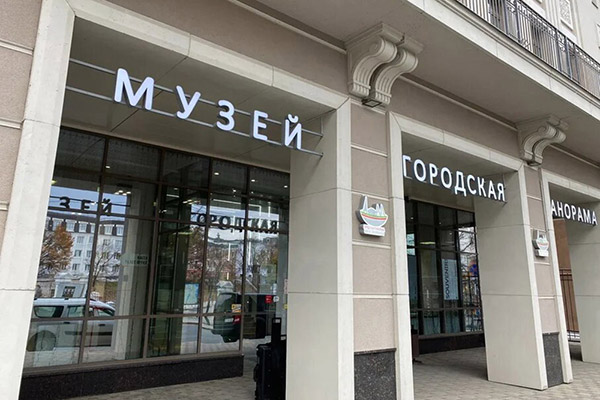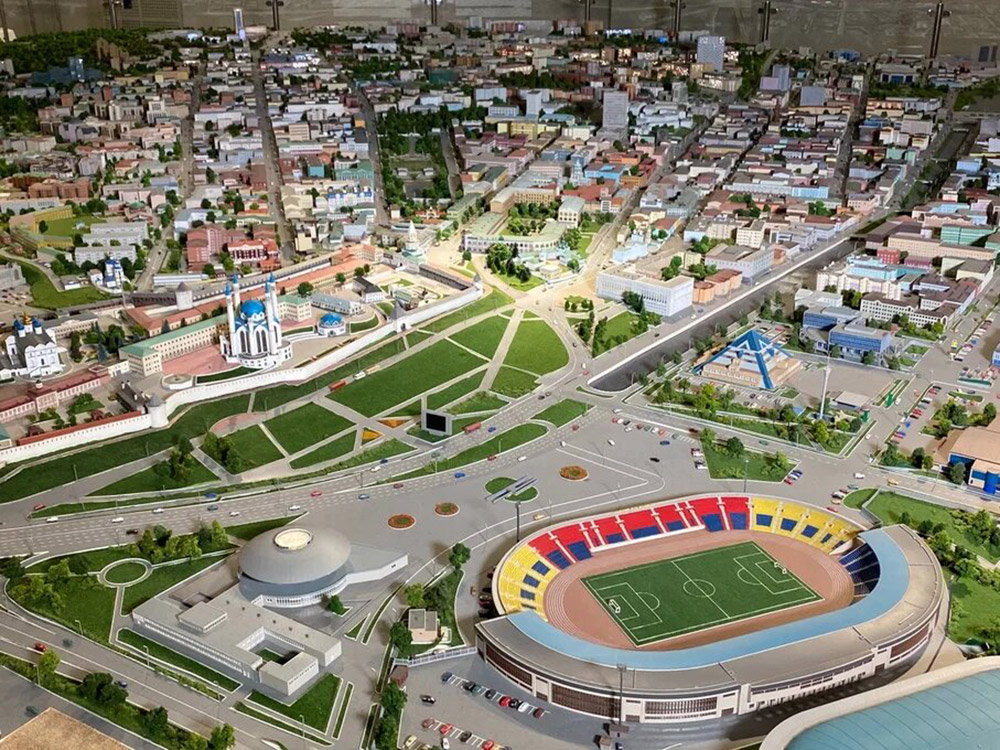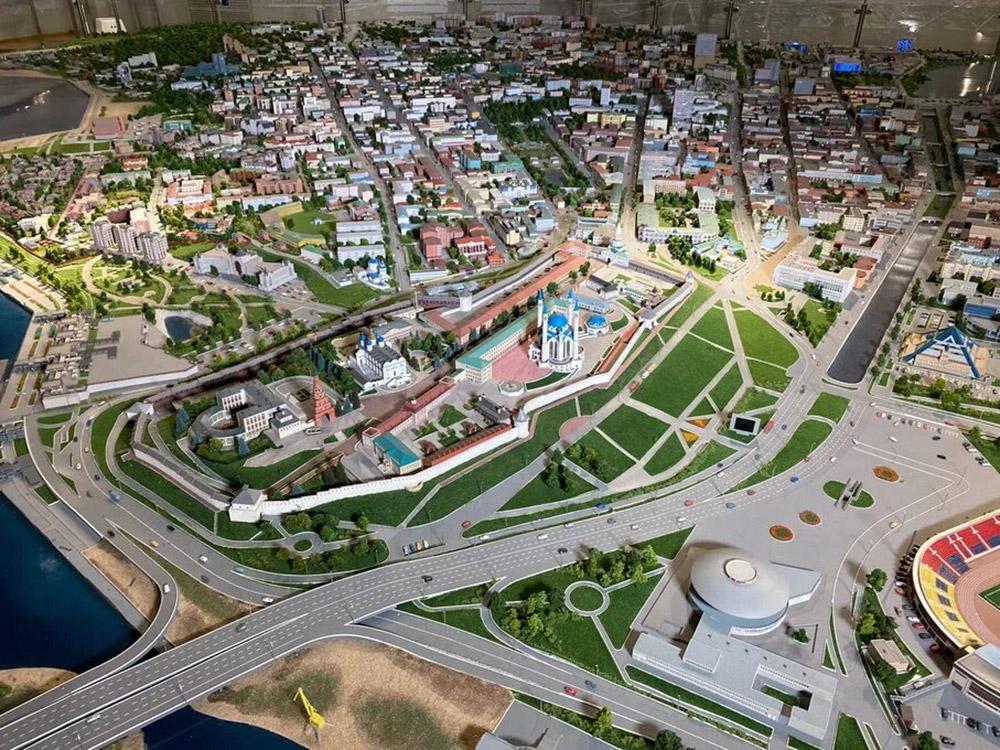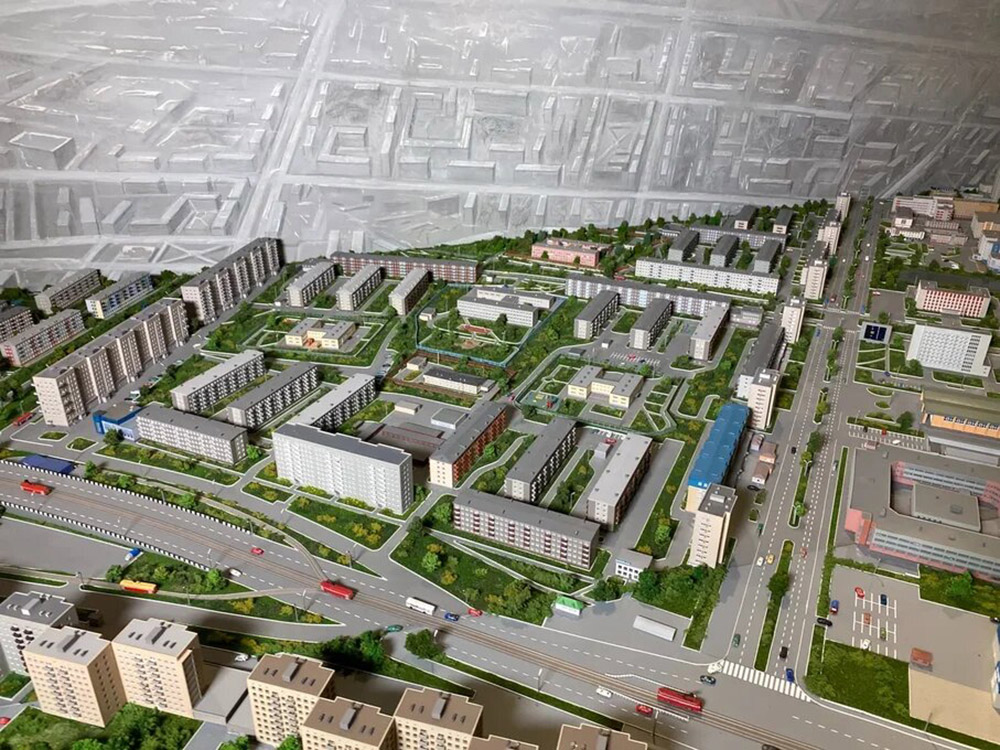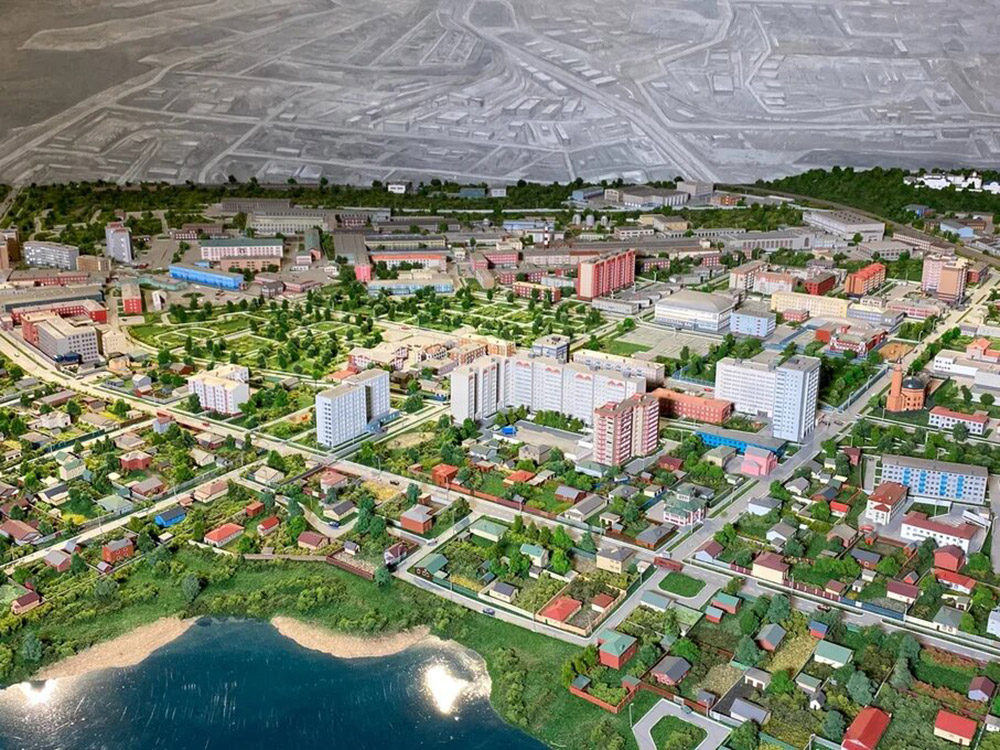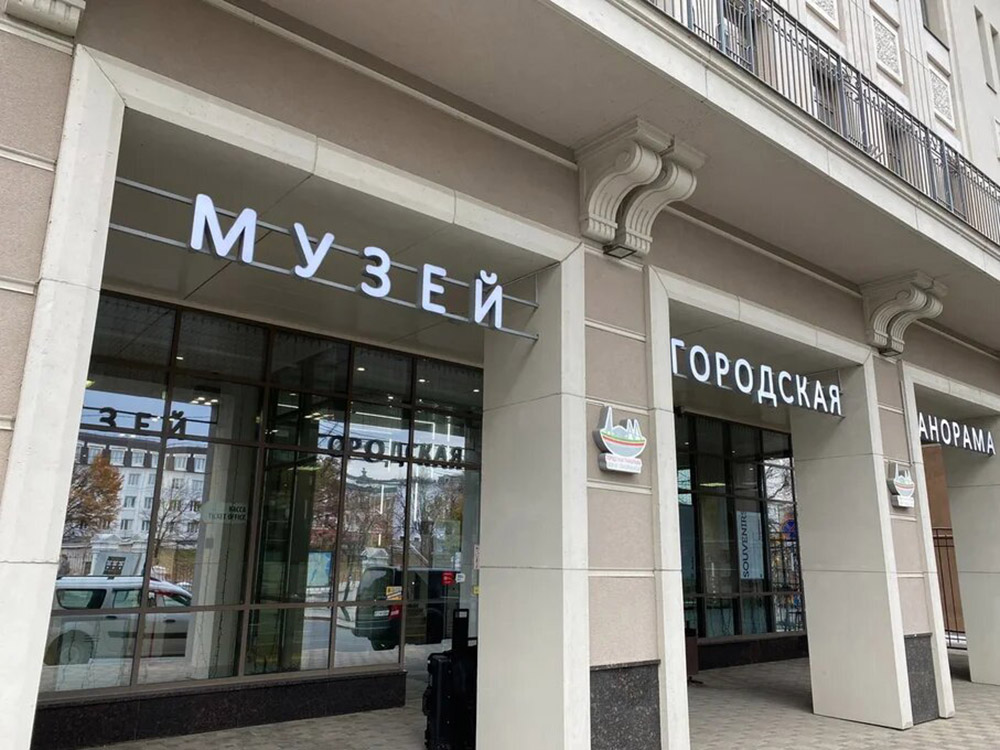
The private museum “City Panorama” opened in the center of Kazan in January 2017. Be sure to visit it if you ever come to the capital of Tatarstan! The museum spreads over four floors of a modern building, offering several exhibitions revealing the deep culture of Kazan through its history and its present. A tour of the museum starts with an introduction video on Kazan that shows one day in the life of the city. The historical city of Kazan is represented in the exhibition halls, including a circular video panorama, a cafe designed as an old wooden city tram, interactive architectural miniature models of Kazan showing the city in the 16th, 18th, as well as the 21st century. Ship models — the corvette Kazan, the galley Tver of Catherine II, and the strug of Peter I — are all in one way or another connected with the history of Kazan. There is also the Hall of Old Tatar Sloboda, an augmented reality zone, where actors play roles of Peter I, Catherine II, Yemelyan Pugachev, and other historical figures. The museum also has a gift shop. With the help of the latest technologies, visitors can see the past of the capital of Tatarstan and compare it with modern Kazan.
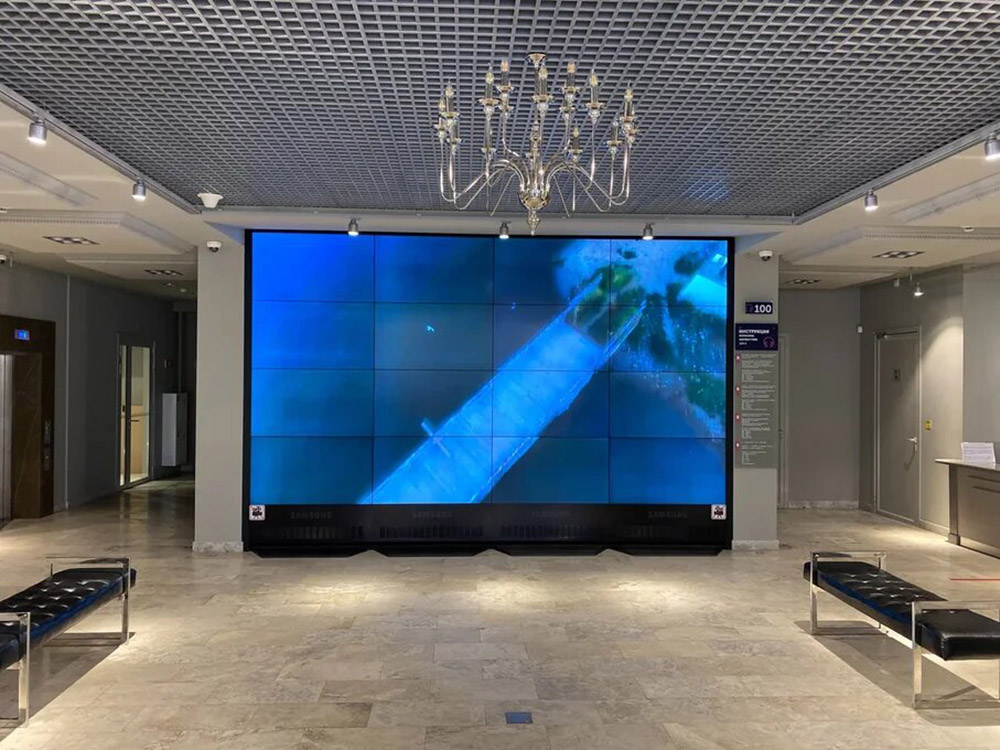
The tour begins with a short film about Kazan played on a large screen, presenting the city to its guests. It shows a day in the life of the capital of Tatarstan: from the morning shots of the city waking up to its beauty in the night lights. The film is stunningly beautiful so that every visitor can feel the spirit of the city; the video shows the main attractions and folk festivities during the city holidays. The central piece of the first floor is a wall painting of a decorative city map and its architecture. There is also a gift shop on the first floor.
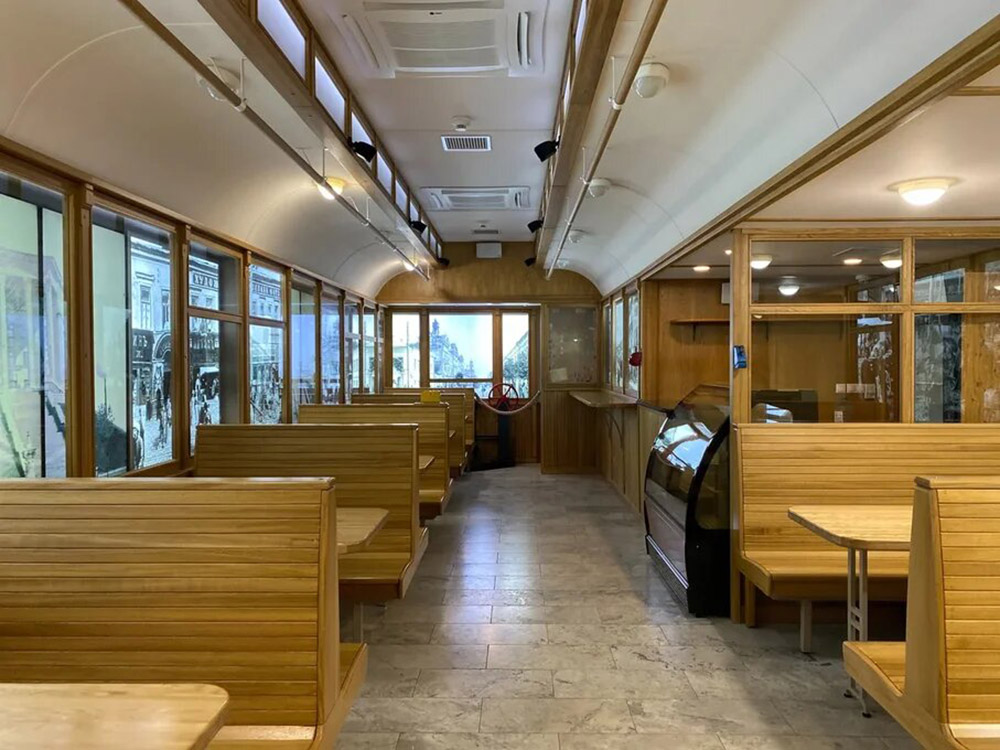
On the second floor, there is a cafe, designed as an old wooden city tram, that ran on the streets of Kazan in the 19th and 20th centuries. Here you can not only have a cup of tea with national pastries but, more importantly, take a virtual tour along the tram routes of old Kazan. The streets of the last century pass your tram windows showing the living history of the city. Obviously, the tram windows are actually newsreel footage played on screens, but because the camera is constantly in motion, it seems that the tram is moving too. The cafe also provides information about the history of the Kazan city tram.
Next to the cafe, you will find a circular video panorama hall. Visitors sit in a circle and watch a documentary on the founding of the city of Kazan and its rich thousand-year history, played on the circular screens. Among other things, the film tells the legend of the dragon Zilant, a mythological creature from Tatar legends and fairy tales, the patron of Kazan. Zilant was featured on the seal of Ivan the Terrible, and both the current coat of arms and the flag of Kazan depict the “winged serpent” as well. During the film, the audience immerses in an era when there were no cars on the streets, but a lot of people, trees, and flowers. The film goes on, and the viewer feels at the center of events: witnessing the change of era, as well as changes in the city landscape, sites, monuments, and people’s appearance.
A separate room on the second floor is dedicated to the history of the Old Tatar Sloboda, a unique historical part of Kazan. It tells about the ways of life of the Tatar people in the late 19th – early 20th centuries. The exhibition includes photographs, household items, books, excerpts from documents, old coins and bills, as well as themed dioramas. For example, the diorama”Teachers of the Tatar School of the End of the 19th Century” shows a school timetable of a Tatar school. You can listen to a story covering one of the topics of the exhibition on the tablets located near each diorama. History documentaries telling how Kazan has changed over the past 100 years are based on newsreel footage and old photographs.
On the touch screens installed along the perimeter of the room, you can read about the events in Kazan’s thousand-year history or take a quiz on the history of the city on several difficulty levels.
Another exhibit is an eight-meter screen with a panorama of Kazan. You can use a joystick to admire the city from a bird’s eye view and enjoy the panoramic views of the third capital of Russia.
The third floor of the museum is occupied by three huge architectural models – small-scale three-dimensional images of the whole city. The models of city landscape of different centuries show the capital of Tatarstan as it was in the 16th and the 18th centuries, as well as modern Kazan with its cultural and architectural traditions preserved to this day. They are still the beauty and historical pride of the Tatar capital. Projectors installed above the models cast pictures onto the miniatures so that the pages of Tatar history seem to come to life.
The first interactive model depicts Kazan of the 16th century, and the narrator tells about the conquest of the city by Ivan the Terrible. The second model is Kazan in the 18th century, telling about the city’s development in the era of Peter I and Catherine II. A special place is given to the model of modern Kazan, depicting only its historical center. For example, it doesn’t include Sotsgorod, a unique area of the Aviastroitelny region of the city, which stayed true to its nature and immune to external influence, so that you can still shoot films about the last century there.
Some visitors believe that this is somehow unfair to its residents and residents of other “forgotten” areas. But Kazan has been growing and developing really fast in recent years, and the model size is limited by the size of the building. Still, it manages to clearly present the historical center, including both architectural heritage and new buildings that were developing as much as possible due to the ambitious projects of past years: the Millennium, the Universiade, the World Cup. The model shows the Kazan Kremlin, the pedestrian Bauman Street, the Söyembikä Tower, the Kul Sharif Mosque, and other sights of the modern city. It is especially beautiful when the lighting suddenly goes off, darkness falls, and then the city lights light up, and the dragon Zilant, the city symbol, flies over the city. You can even see its shadow. The total area of the models exceeds 300 square meters.
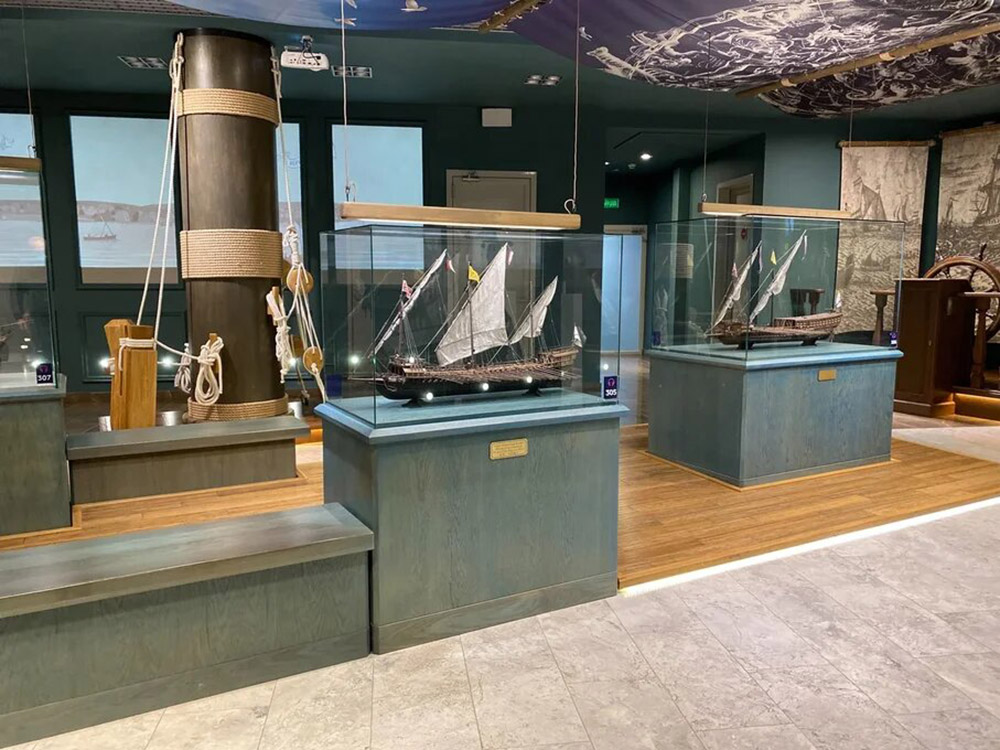
Between the two halls with city models, miniature models of ships connected with the history of Kazan are on display — the corvette Kazan, the strug of Peter I, and the galley Tver of Catherine II.
The galley Tver of twenty-six oars was built at the Tver shipyard for Catherine’s journey down the Volga in 1767. The galley was the flagship of the rowing flotilla. In 1768, the Empress returned to St.Petersburg, and the galley Tver was sent to the Kazan Admiralty for preservation. At first, they managed to save the famous ship from a real threat of being used for firewood and opened the monument to the public. But the galley has not survived to this day. In October 1956, the world’s only rowing boat was destroyed by fire caused by a child’s prank.
The 16-gun sailing corvette Kazan was laid down in 1806 at the Kazan Admiralty, and after launching on June 11, 1807, it became a part of the Caspian Flotilla of Russia. She participated in the Russo-Persian War of 1804-1813, which ended with a decisive Russian victory. As a result, Eastern Georgia, the Northern part of Persia, Eastern Armenia, and other states became parts of the Russian Empire, but, most importantly, Russia gained the exclusive right to have a naval fleet in the Caspian Sea.
The strug of Peter the Great is the boat on which the Emperor visited Kazan almost 300 years ago during his Persian campaign of 1722. The Emperor arrived at Kazan on May 27, visited the governor, and had a thanksgiving moleben in the Annunciation Cathedral of the Kazan Kremlin. On the same day, Peter started an inspection tour of Kazan. He examined current affairs in the provincial office and demanded a book of the office decrees. As it turned out, the book had been lost. The emperor was very angry, and even later, in Tarkhu, far from Kazan, he remembered that and issued a decree to sort it out.
The fourth floor of the museum is an augmented reality zone. Videos of actors dressed as Peter I, Catherine II, Gabdulla Tuqay, Märcani, Söyembikä, and Yemelyan Pugachev are projected on the big screen. If you stand in front of the screen, the augmented reality mode will turn on and you will appear on the screen next to historical characters. You can shake their hand or take a selfie together. The photo is taken automatically and then sent to your email or printed out.
On the same floor, there is a play area for small children. The older children can play a computer game where they have to defeat a dragon or use tablets to take a quiz on the history of Kazan from its foundation to the present day.
“In 2015, this place was just a plot of land with a half-destroyed building. We knew even then that the city needs a tourist attraction where all the historical information about the city will be presented in one place in modern form. There are such museums all over the world, we studied them, went to Shanghai. A big team of leading scientists, Tatarstan historians, worked on the project. One of the model-making workshops from Tula helped with the historical models. Tula region is long famous for its love of miniatures,” said Mikhail Vishin, the representative of the museum’s founder, First Deputy Director of Bauman Printing House.
In an interview with the Director of the museum Olga Valeeva, a correspondent of the Press Service of the Association of Private Museums of Russia asked her, how difficult it was to manage a team in such a large building and how easy it was to cope with difficulties encountered?
“We have a really great team formed before the museum even opened, with such a team everything is easy. Of course, there are some challenges, as in any other company, but we can handle them. We haven’t seen our visitors, and they haven’t seen the exhibitions for two months, but after that, we were happy to reopen, and by the way, the post-quarantine period showed the boom in museum visitors, these months were record-breaking,” said Olga Inilevna.
When asked about the target audience and the age of visitors, Olga Valeeva replied: “In the first years after the opening, most visitors were schoolchildren, but now we see visitors of all ages, with all kinds of interests and from all regions.”
Tourists speak favorably about the museum. They like how the history is presented, note the friendly staff, and recommend assigning at least two hours for the visit. The team of our Association very much enjoyed the visit and fully agrees with the positive reviews by other visitors. The “City Panorama” Museum offers discounts on tickets for schoolchildren, students, and senior citizens. The museum is fully accessible for people with disabilities.
